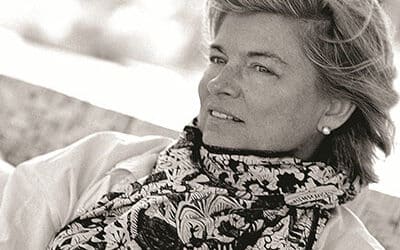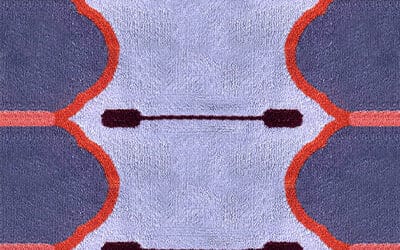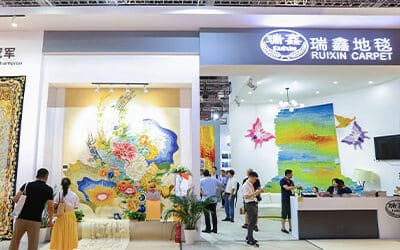It is almost 10 years ago that artist and designer Allistair Covell was awarded a Carpet Design Award at Domotex in January 2014. Winning AfghanMade Best Young Designer for his design The City was Covell’s first experience of the rug industry and he soon became absorbed in the whole process. Over the last 10 years he has often returned to creating rug artworks and one of his designs, Jane’s Dream, was recently taken into the art collection of the University of Hertfordshire. Here, Allistair Covell discusses how his relationship with rugs has developed over the last 10 years, with COVER Editor Lucy Upward.
- How did you come to design your first carpets?
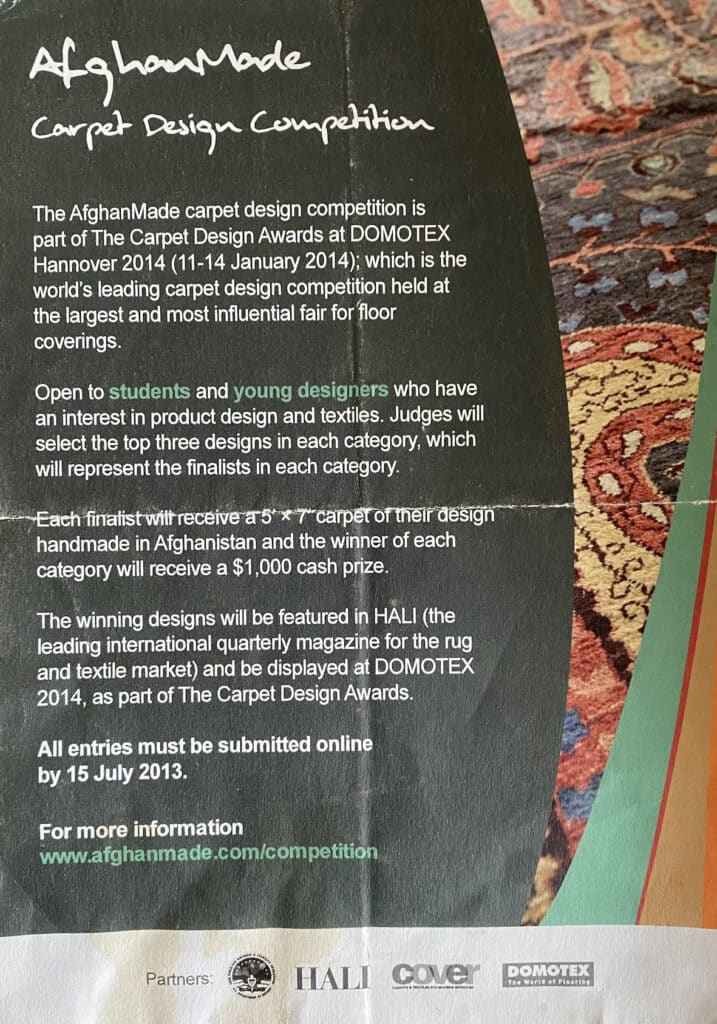
In 2013 I saw an open call by AfghanMade inviting artists to ‘design a carpet’. With a background in fine art textiles, this new ‘medium’ appealed to me as I hadn’t considered working with carpets and the prospect of having a carpet hand-made in Afghanistan was a unique opportunity, something new to explore. Looking back I realised I took quite a risk entering such a colourful and abstract composition. The open call didn’t have a set theme so I was driven by creative intrigue: what would a painting look like as a carpet?
- You won a CDA award at Domotex almost 10 years ago, how did that feel at the time?
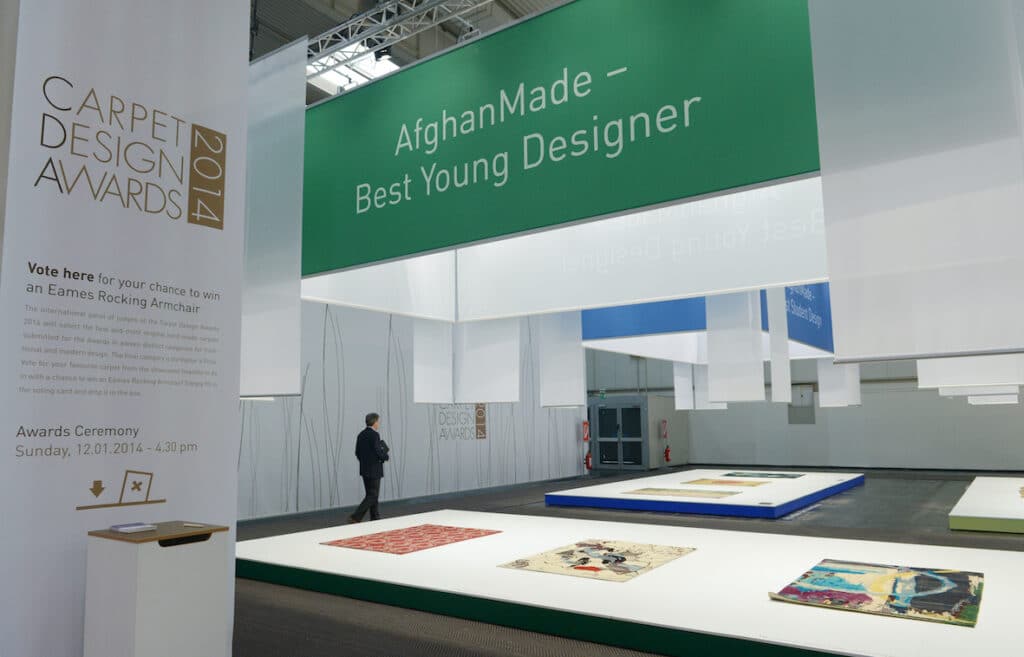
I remember feeling incredibly fortunate to have won the Best Young Designer award for my design The City. I really appreciated being given the opportunity to be selected for the CDA’s and to also attend Domotex. It was my first real introduction to carpets and the event enabled me to learn about the industry, the heritage, meet other designers and see companies from around the world.
- Did you develop a taste for designing rugs?
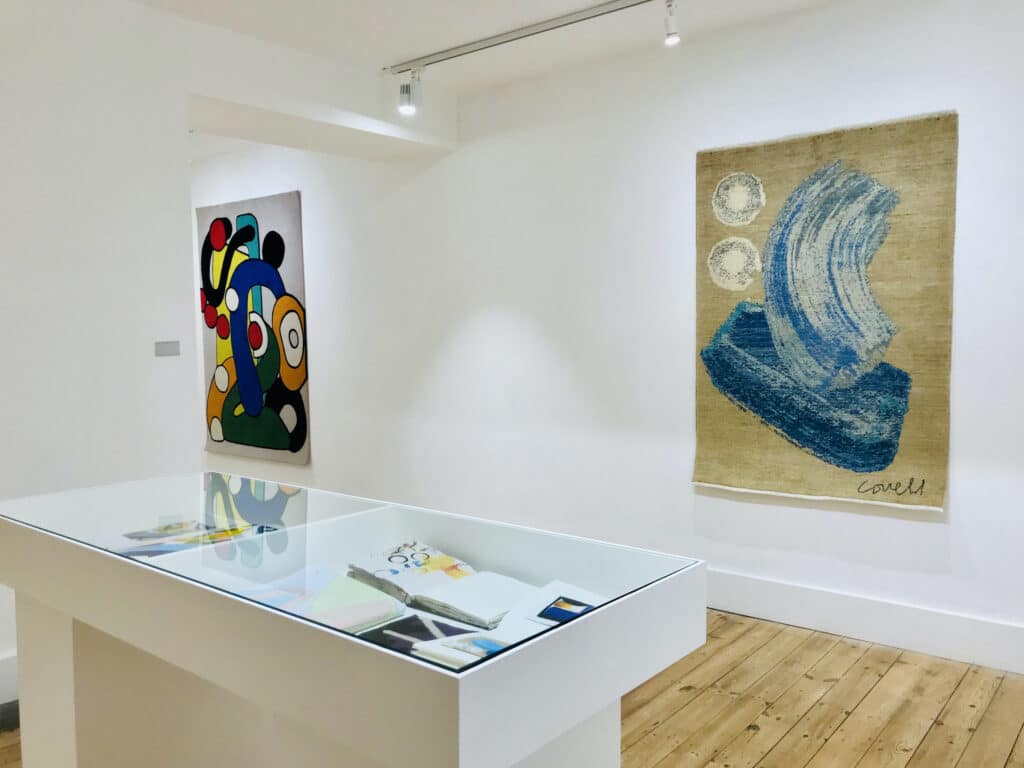
Seeing the carpet on the CDA stand did encourage me to think about translating other paintings into woven carpets. Looking through old sketchbooks I felt my work suited this new medium and so I began develop ideas around the concept of ‘Canvas To Carpet’. I wasn’t really looking to create a commercial line or necessarily follow the trends, instead I viewed the carpets as an extension of my painting practice, with each one being an original ‘artwork’ in its own right.
In the summer of 2014 I started working with Rug-Maker and created a small experimental collection, exploring a brighter colour palette and refined abstract look, influenced mostly by the style and technique of the Nepalese knot. In 2017, COVER kindly put me in touch with Turquoise Mountain who operates in Afghanistan. They work with the same team who worked on the AfghanMade open call in 2013.
- Your 2019 exhibition called ‘Canvas to Carpet’ demonstrated the relationship between your rugs and paintings. How do they relate?
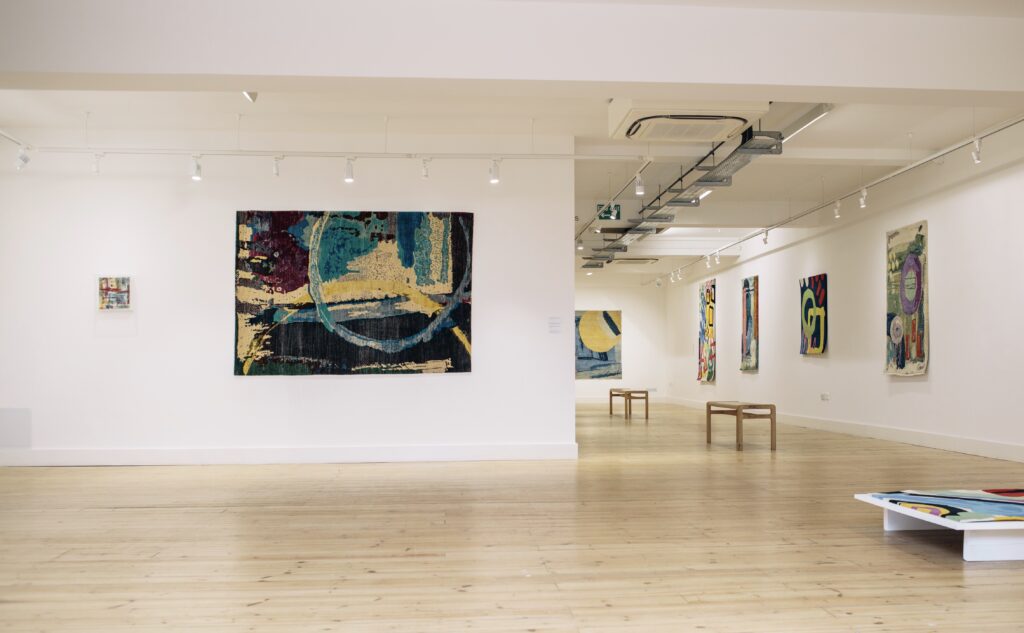
The exhibition ‘Canvas to Carpet’ at the Broadway Gallery, Letchworth, was a presentation of carpets made by Turquoise Mountain and Rug-Maker, based on my paintings and drawings. Room one displayed the carpets on the walls like artworks and the second focused on my creative practice, alongside two videos illustrating the carpet-making process in both countries.
While the exhibition was a focus on my work, I also planned it to be a celebration of the weavers and to highlight their skill of translating a paint splash or brush mark into a woven knot.
The exhibition explored the relationship between my paintings and carpets and how over time one medium began to inform and influence the other. Working between painting on canvas or an iPad mirrored the two distinct knot styles; the bold pop-art inspired carpets made with Rug-Maker or the painterly, highly detailed but more subtle natural tones by Turquoise Mountain.
Over time I started to think less about what the final design would look like as a ‘carpet’ and more so as a woven artwork in its own right. This led me to experimenting with different pile heights and smaller carpet sizes. It’s interesting that by the time I started working with Turquoise Mountain, I had returned to creating paintings that had become more complex in style and the TM carpets revealed details that I didn’t notice on the original canvas.
After winning the award I had always envisioned the carpets to be displayed in a gallery setting so it was a real honour to have been invited by the Broadway Gallery’s curator Laura Dennis to have a solo show, especially so early on in working with carpets. For the exhibition, Laura and I intended to present carpets on both the walls and the floor, a combination of my artistic vision plus honouring the heritage and how people traditionally view a carpet.
- What inspired the design of the rug Jane’s Dream, which has been accepted into the University of Hertfordshire Art Collection?
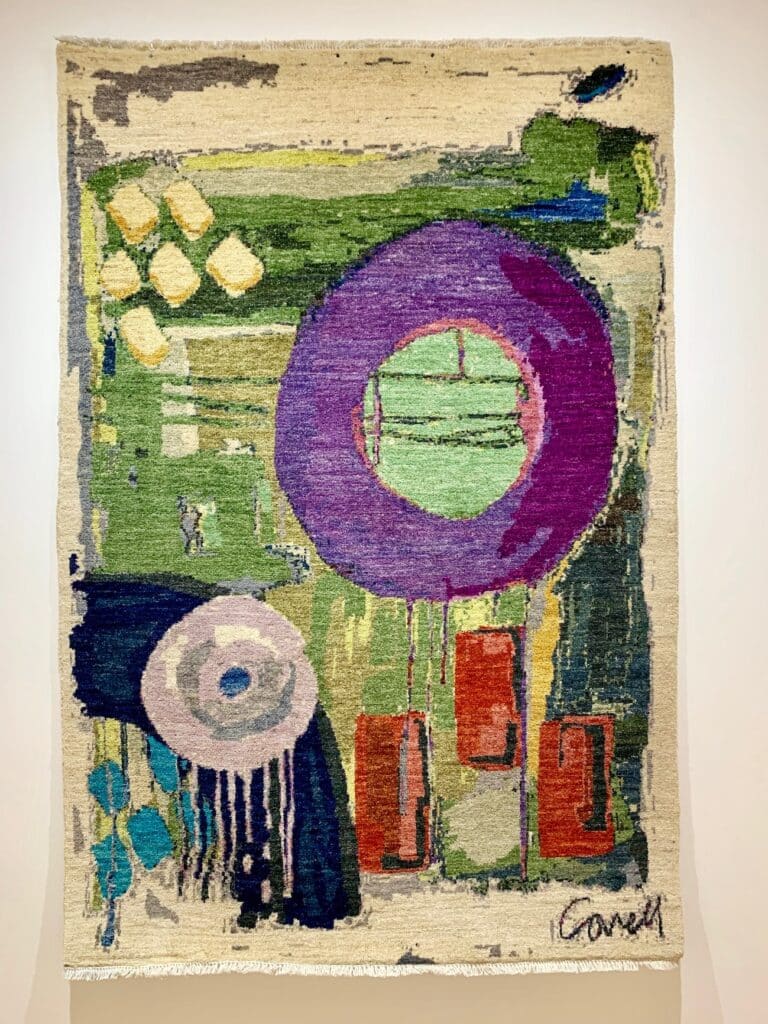
Like most of my artworks, the inspiration is music and sound, and in the case of Jane’s Dream, it’s the instrumental song of the same name by Janelle Monáe and musician Jon Brion. Having synaesthesia, specifically chromesthesia, I try to describe sound as an image on a surface and the instruments, song melodies and vocals are depicted as colours, layered shapes and rhythmic brush marks.
As the original drawing for Jane’s Dream was an iPad painting, I was interested to see how a digital image would translate into an Afghan knot. The detail the weavers picked up from the individual computerised pixels revealed marks and colours that couldn’t be seen in the original and I find it fascinating that an iPad drawing carpet had a more painterly look than those originally made on canvas. To further differentiate this as a woven artwork and not a traditional carpet, I added my surname to resemble how an artist marks their work on canvas.
- How does it feel to have rug going into the collection?
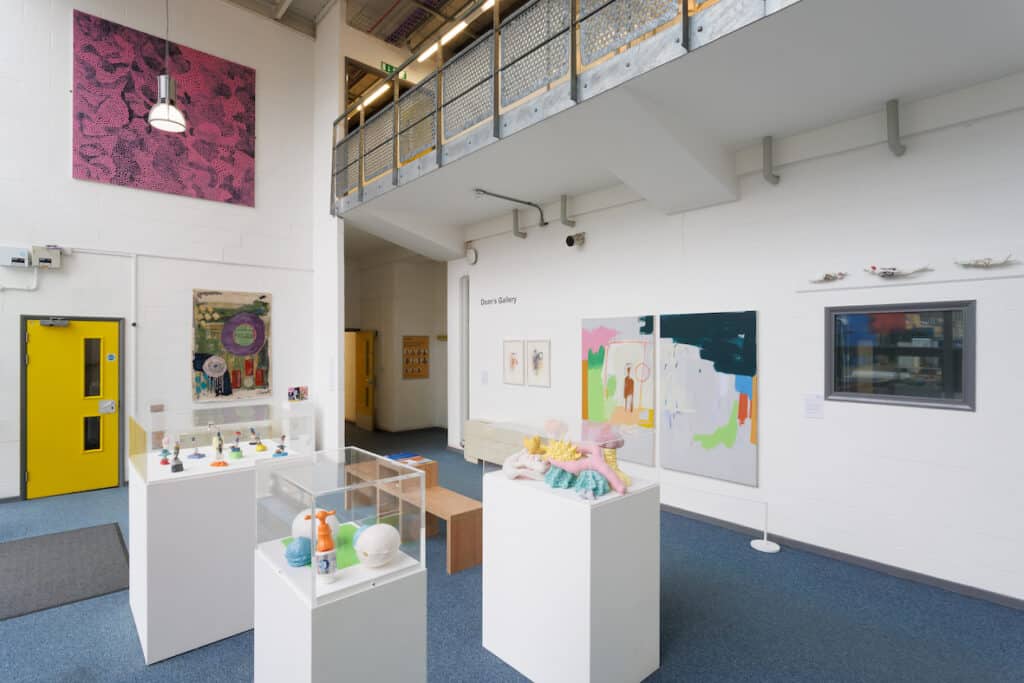
I feel incredibly honoured that Jane’s Dream has become part of the UH Arts + Culture Art Collection and is on public display in the Dean’s Gallery. I never imagined ten years ago that entering the CDA’s would lead to having a carpet in an art collection.
The UH Arts + Culture Art Collection has recently been awarded Accredited Museum Collection status by Arts Council England and includes works by Ben Nicholson, Barbara Hepworth and Andy Goldsworthy alongside contemporary artists. Jane’s Dream is the second large-scale wool textile artwork the collection holds, the first being Caroline Achaintre’s tufted work Zibra. The collection also holds other textile artworks by artists including Fiona Curran, Lucy Brown, Aran Illingworth and Harriet Riddle.
- What are you working on at the moment? Are you still making rugs?
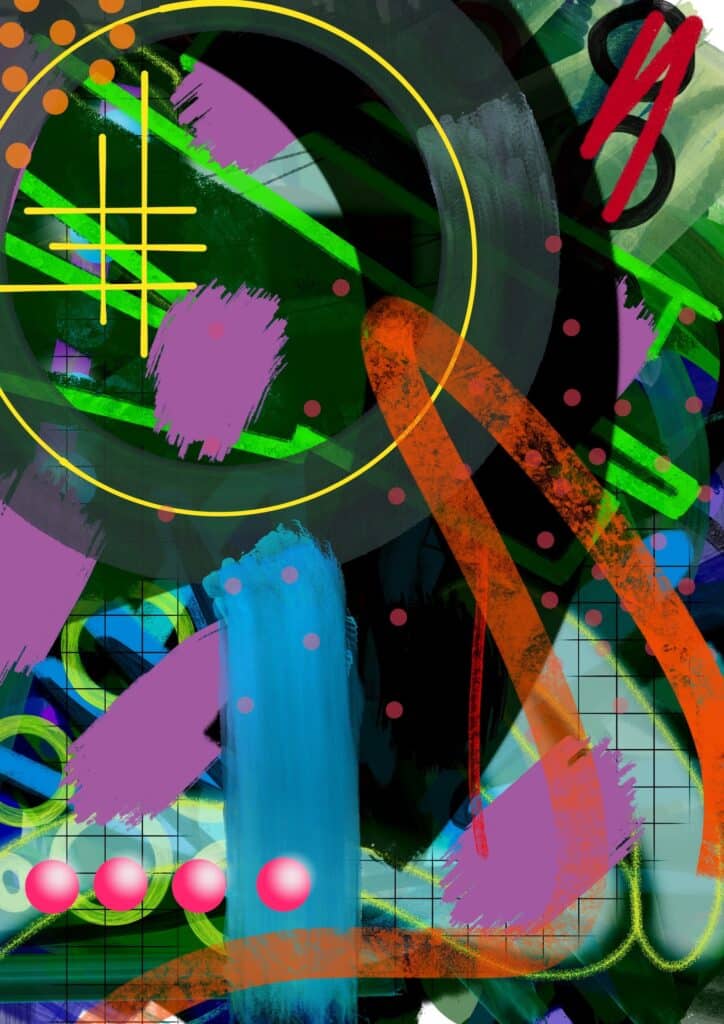
Over the last couple of years I have temporally stepped back from making carpets, partly as a result of creating artworks solely on the iPad. I didn’t realised I would become so consumed with making digital paintings and these have expanded and deepened my research into depicting music, this time in real time on a screen. Working in the digital sphere has encouraged me to experiment with video as an artistic medium. While video art might at first appear opposite to carpets as film is moving images rather than static, the animated paintings can be paused at any point and a ‘film still’ composition emerges.
After the success of Jane’s Dream in carpet form, I’ve begun to visualise how these still images could be presented as ‘woven stills’ and a capsule carpet collection could represent a song or an album. These new iPad paintings are far more complex and detailed than anything I’ve had made into a carpet before so it would be interesting to see if this level of detail can be achieved. Referencing the past while also looking forward, the working title for this collection is ‘Reel to Rug’, a natural sequel to ‘Canvas to Carpet’.


